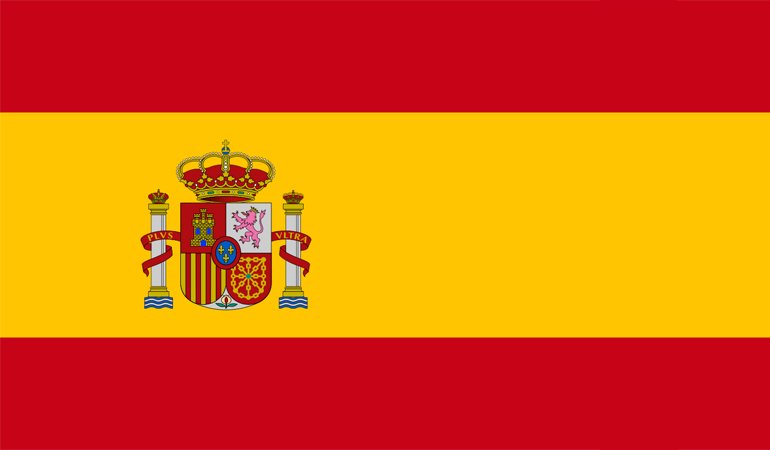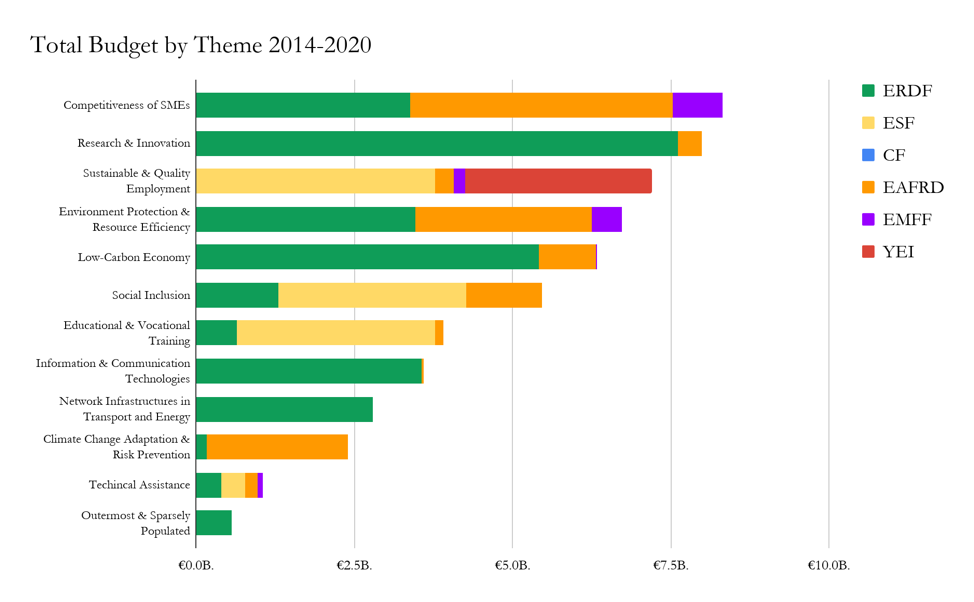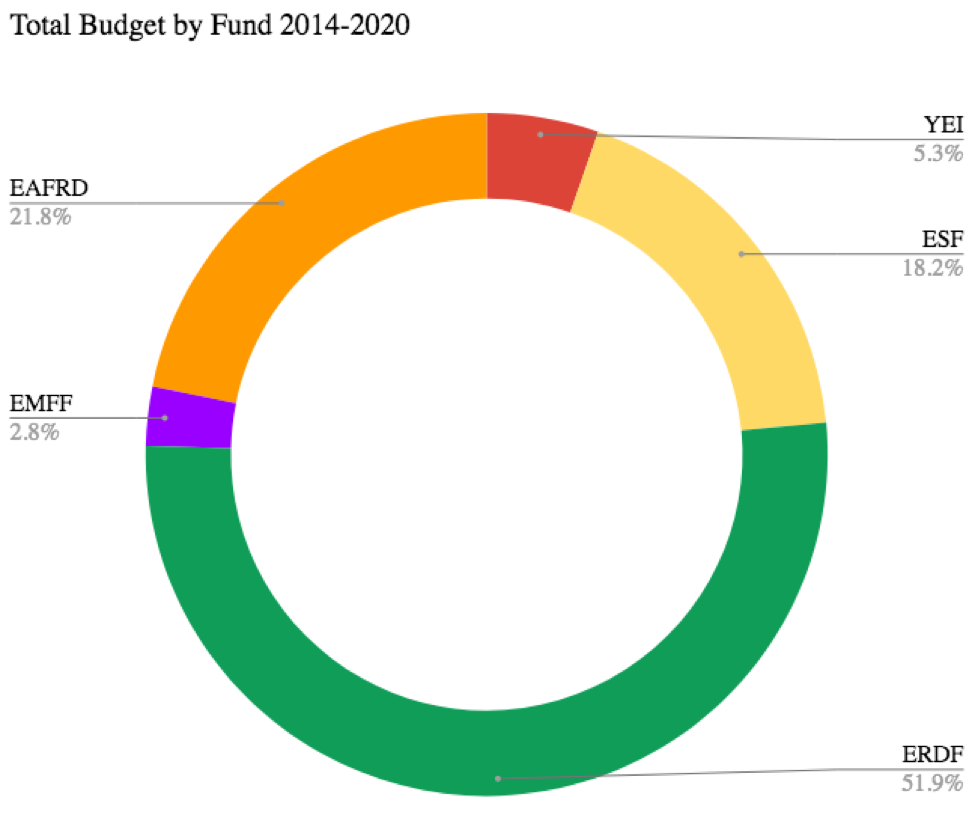News
Country Profile | Spain

For the 2014-2020 financial framework of European Structural and Investments Funds, Spain was allocated a total of €39.8 billion, which, added to a national contribution of €16.5 billion, see the country reaching a total budget of €56.3billion to be invested in various areas to help it improve its overall performances in many sectors and reduce unemployment.
In fact, this budget is intended to be used through 64 national and regional programmes to:
- Increase labour market participation and employability, with a specific focus on young people and vulnerable groups;
- Improve education, training and social inclusion policies;
- Enhance the competitiveness of SMEs (including in agriculture and fisheries) by supporting their presence in international markets;
- Strengthen research, development and innovation (RD&I) with an emphasis on applied RD&I, information and communications technologies ICT, particularly in favour of SMEs;
- Promote sustainable fisheries and aquaculture, and improve marine ecosystems and aquatic biodiversity;
- Target environmental investments to support energy efficiency and provide clean urban transport services;
- Promote social inclusion, with particular attention to the Roma community and migrants;
- Enhance the agricultural sector, focusing on organic farming and investing in young farmers enterprises.
The Spanish government has been focused on investing the budget of the European Structural and Investment Funds mainly to boost the competitiveness of small and medium enterprises (especially in the agriculture, fisheries and tech sectors) and improve their presence in the international market thanks to more than €7.5 billion coming from the European Regional Development Fund (ERDF), the European Agricultural Fund for Rural Development (EAFRD) and the European Maritime and Fisheries Fund (EMFF).

Another very important theme of investments for Spain is research and innovation: Chart 1 shows that around €7.5 billion are being invested to strengthening RD&I as well as ICT, with most of the funding coming from the ERDF. This theme is extremely relevant for the Spanish government as it gives institutes and companies access to better infrastructure and more qualified personnel, which translates into improved, new final products. To tackle one of Spain’s most notorious problems, unemployment, the European Social Fund (ESF) and the Youth Employment Initiative (YEI) have allocated over €7 billion with the objective of creating new jobs, especially for women and young people.
The Chart below allows us to observe the share of each Fund in the 2014-2020 financial framework budget of Spain and understand how this budget is being spent.

Of the €56.3 billion budget, the largest share is held by the ERDF, with more than half of the total corresponding to more than €29 billion. A quarter of the €29 billion is to be invested in RD&I and ICT, the rest is divided mostly between environmental protection measures and green economy enhancements. The EAFRD is investing €12 billion in SMEs, environment-related issues and social inclusion with a share of 21.8%. The ESF allocated €10 billion to be used for the creation of jobs, the promotion of social inclusion and the establishment of educational and vocational training for the unemployed and the youth. The €10 billion contribution of the ESF translates into 18.2% of the total budget for the 2014-2020 timeframe. The YEI and EMFF are contributing with €3 and €1.5 billions, respectively 5.3% and 2.8% of the total.
The performance of Spain in terms of ESIF absorption rates are remarkably underwhelming: as of July 1st 2019, the country recorded a 22% share in terms of spent funding from the ESIF, meaning only €12.5 billion out of €56.3 were spent. In terms of allocated financial resources things are even worse with 53% of assigned funding, 12% below the EU average. Comparing this data with other EU member states we see how Spain is actually at the bottom place: Spain is the last country in terms of spent funding, together with Slovakia, and is also last on the subject of allocated financial resources.
A lot can and should be done in Spain in the remaining one and a half years of the 2014-2020 financial framework. With an available budget of more than €55 billion that is not being spent, Spain is losing a great opportunity to reduce the unemployment rate, in particular youth unemployment which is above 33%, and to thoroughly improve the economy of its southern regions, where the GDP per capita is 65%-to-90% lower than the EU-27 average.
Facts:
Name: Spain
Capital: Madrid
Government: Parliamentary Constitutional Monarchy
Population: 46,934,632
Area: 505,990 km2
GDP per capita: €28,990
Currency: Euro (€)
Last news
-

-

-
 26 June 2025
26 June 2025Key takeaways from NATO Summit in the Hague






